This weekend Annie will be doing an oil painting demo on how she adds color glazes over an underpainting. So for today’s post I thought I would show a few peaks at her process as well as some of her thoughts on colorizing an underpainting.
So why bother with an underpainting? Painting an underpainting takes a lot longer than getting right into the full painting and so it can feel like an overly laborious and redundant step. But while it does tend to take longer, it offers the advantage of allowing you to concentrate on value and color independently of one another, so you can devote their full attention to each in turn.
Underpaintings also allow the artist to take advantage of one of the curious properties of oil painting: That each layer glazed onto the surface adds greater depth and translucency to the surface of the image. This has the affect of making things like skin, look like, well, skin. Making this a wonderful;y useful technique for portraiture.
It can be intimidating to add color once you’ve finished an underpainting. You have to take a pristine monochrome that could almost be a framed finished painting on its own, and now you have to deface it with bold strokes of color. It can initially be very intimidating.
Thankfully in oil you can simply start splashing color on, and if it looks wrong, you can wipe it out, without affecting your underpainting. This means that you can be very bold with initial choices.
For her underpaintings, Annie uses Raw Umber and Titanium White, with very little medium. (It’s important to use very little medium in the underpainting, otherwise the image may not be fat over lean and the later layers may not be stable). Before moving on to color Annie will allow the painting surface to become completely touch dry.
For those of you who will be attending DragonCon in Atlanta this Labor Day weekend, Annie’s demonstration is Saturday, September 2. It will be at 1PM in Grand Hall D of the Hyatt.
Here is a preview of the painting she will be working on:


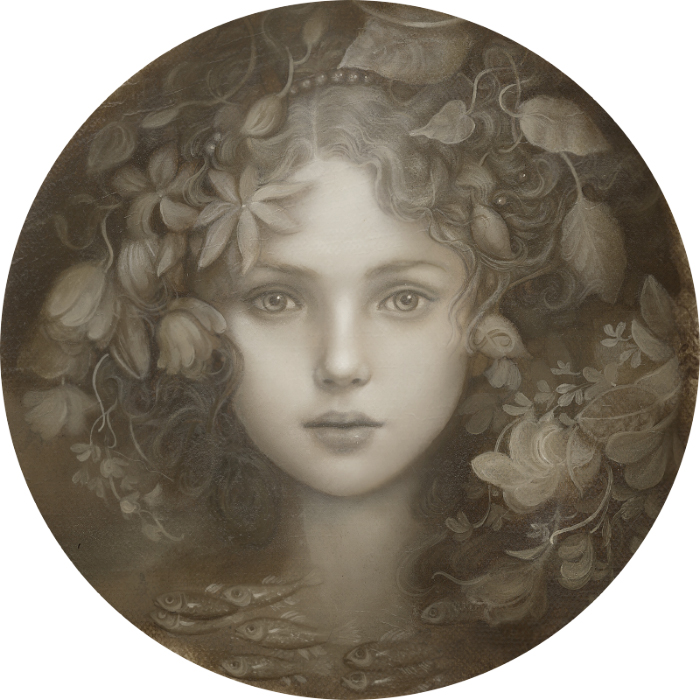

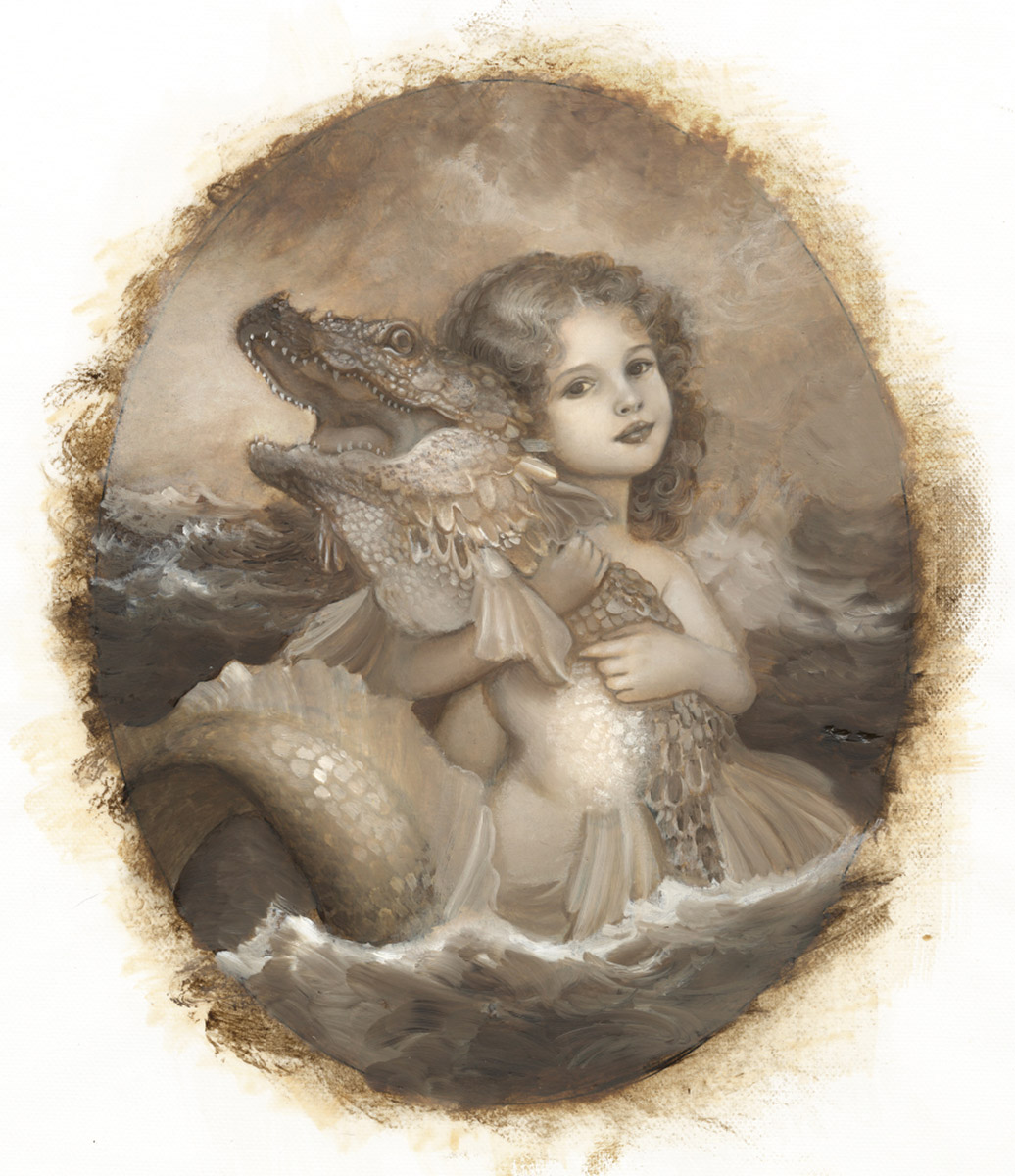
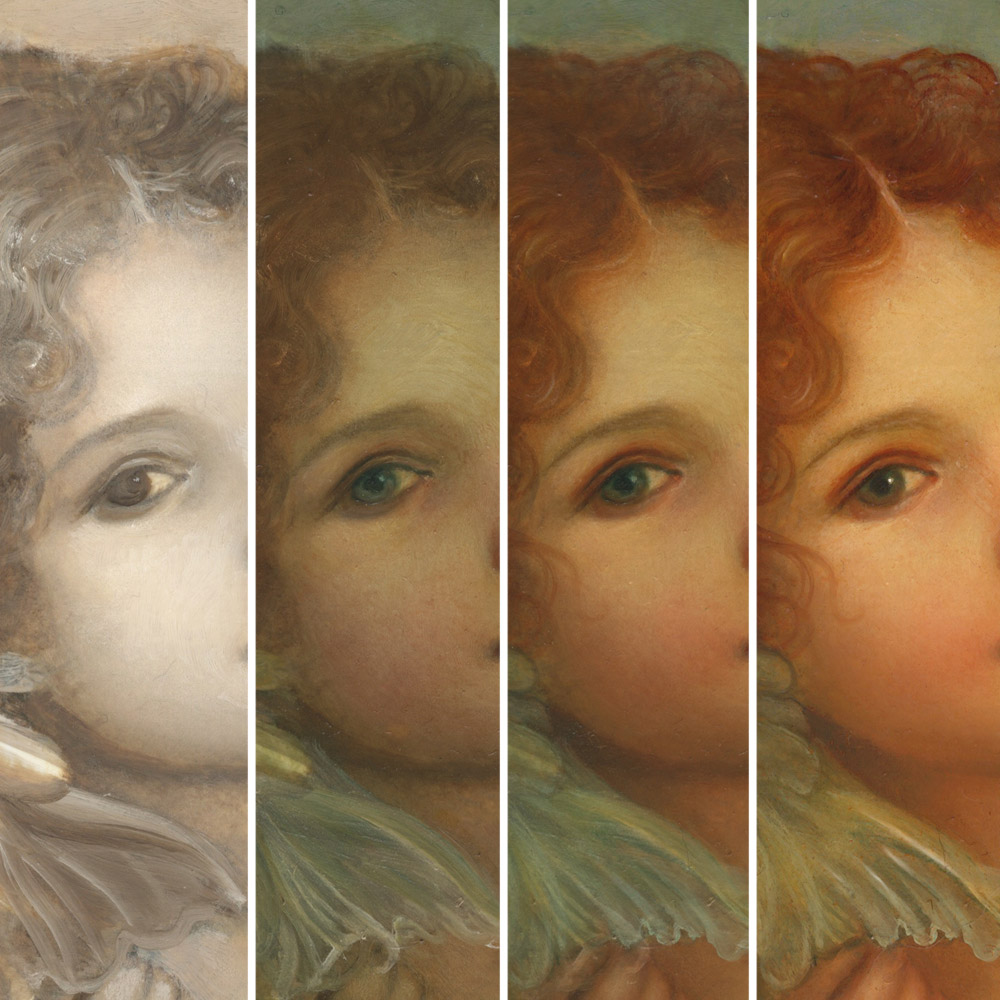
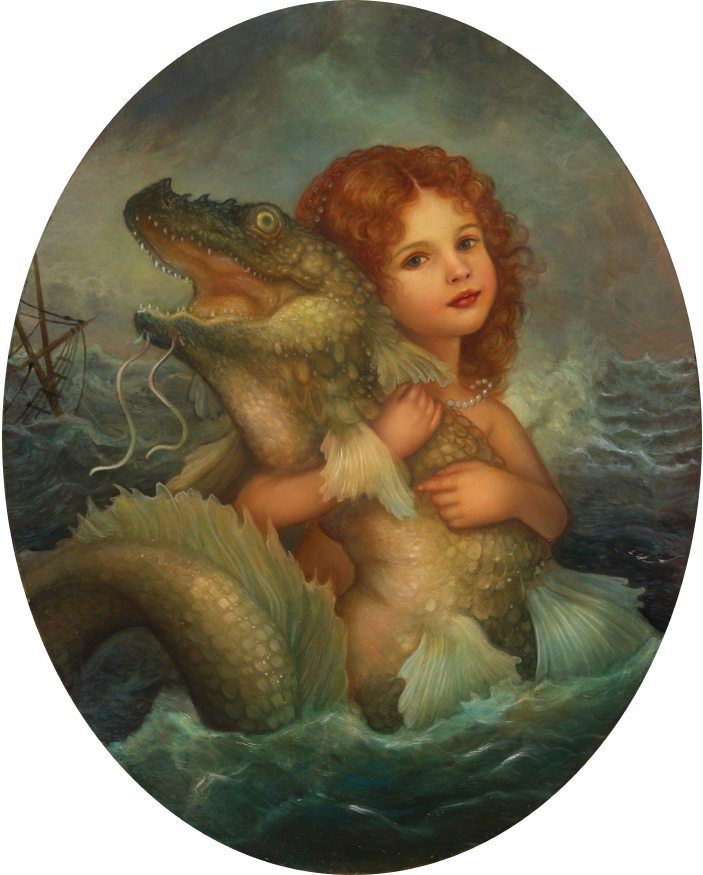
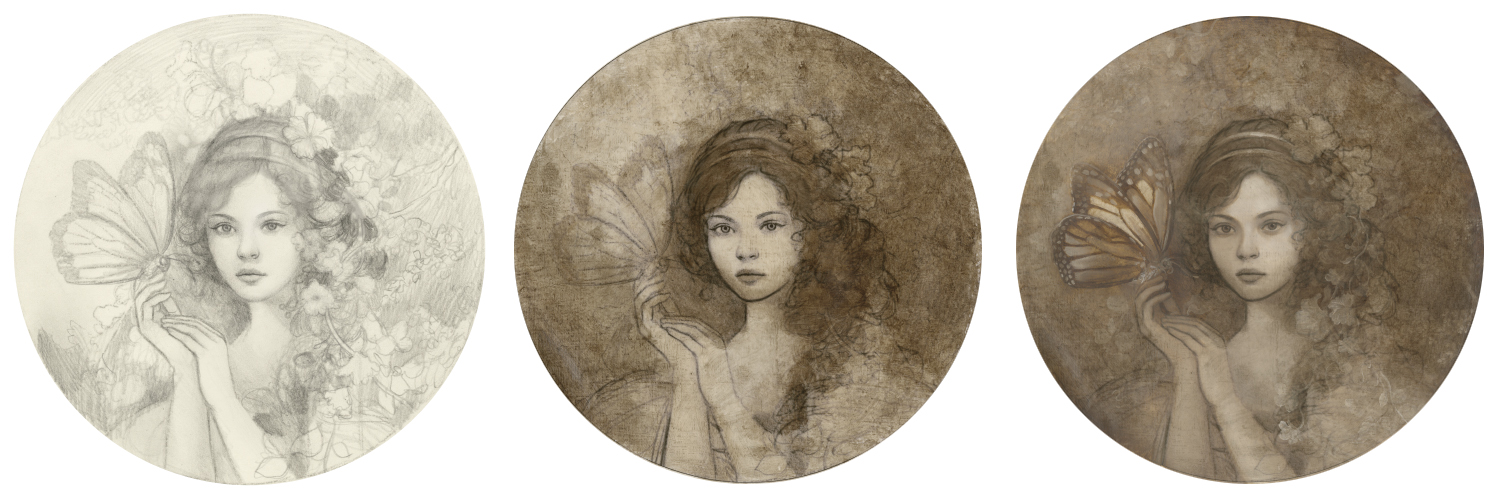
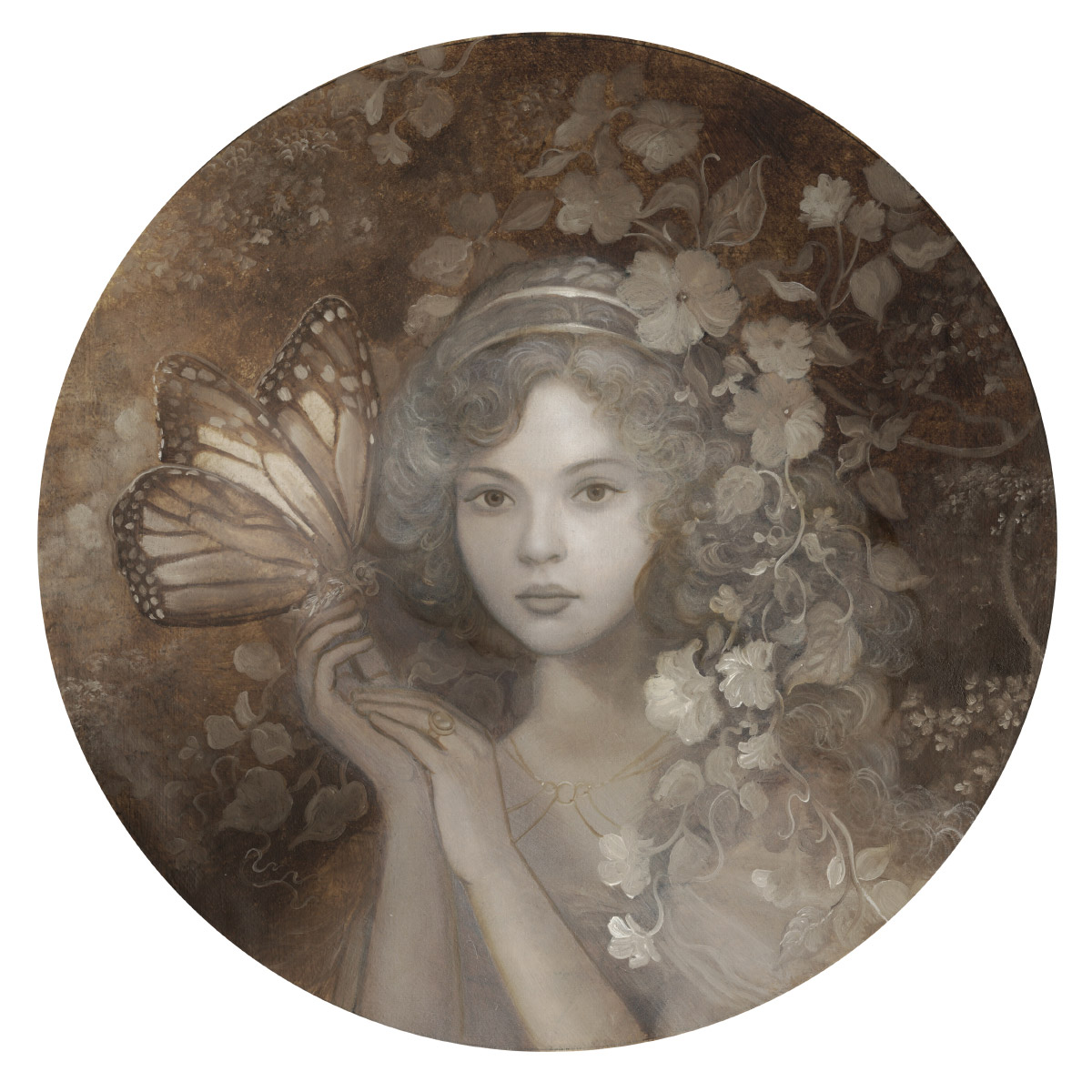
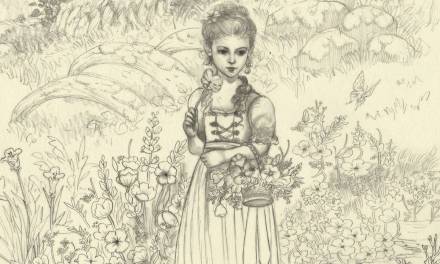
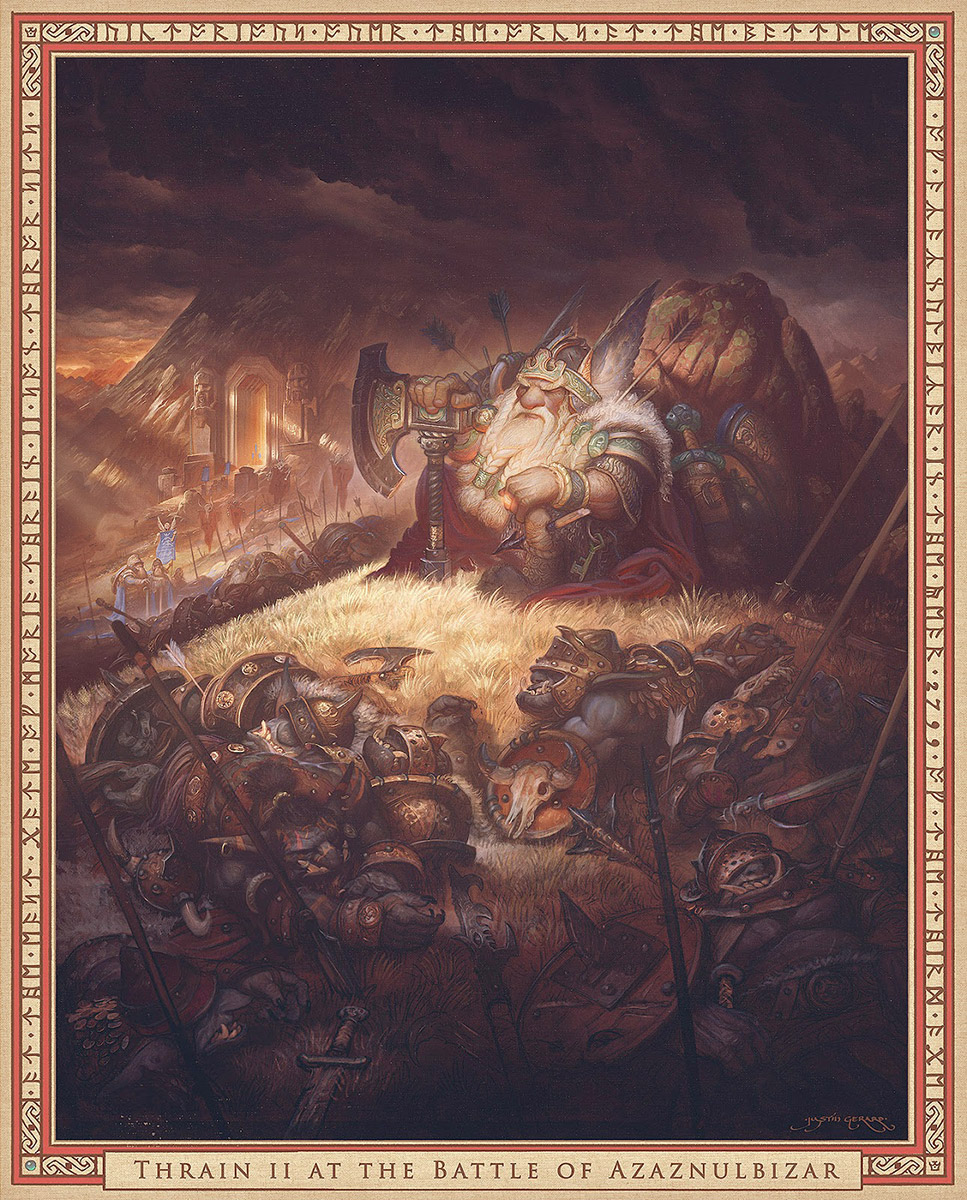
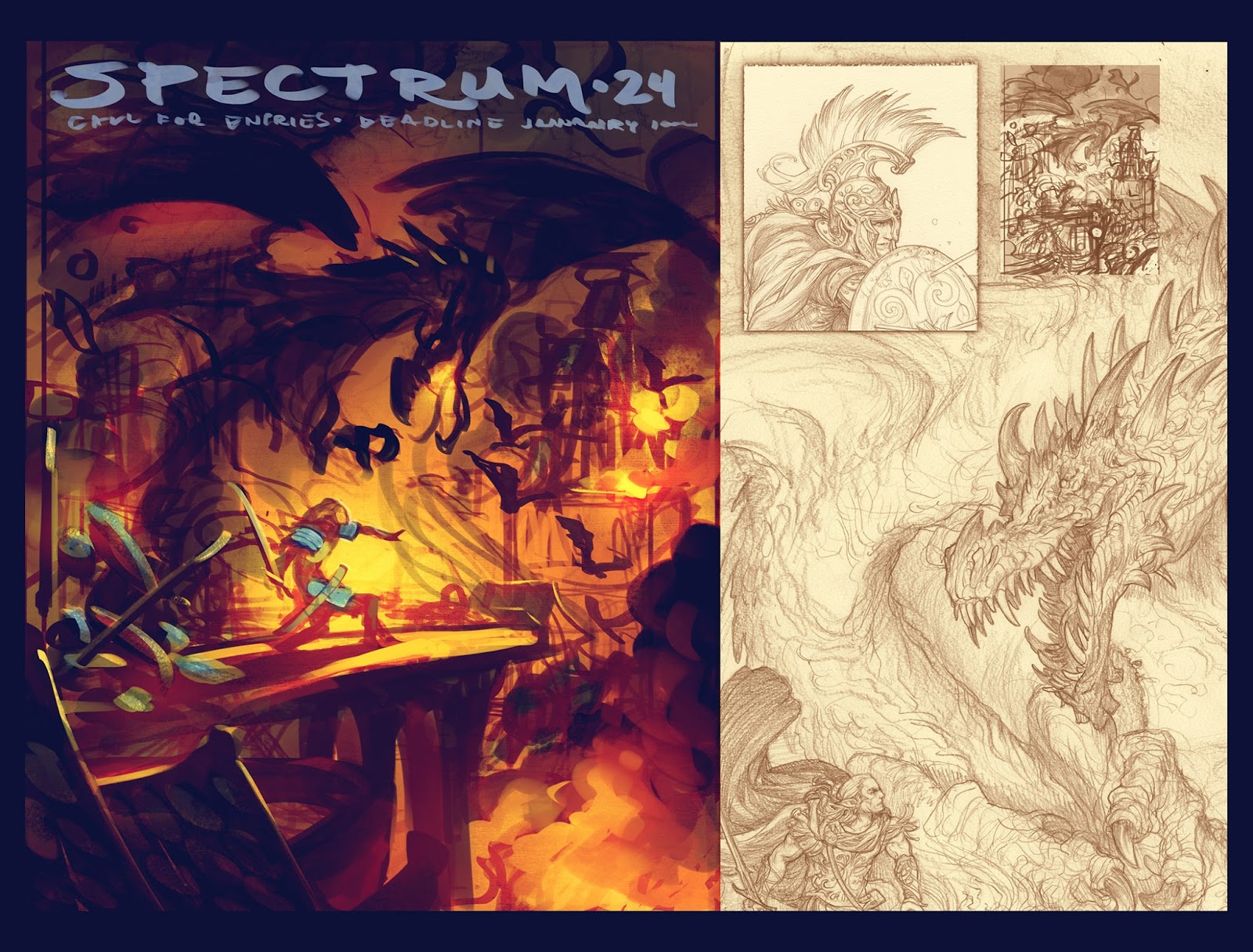
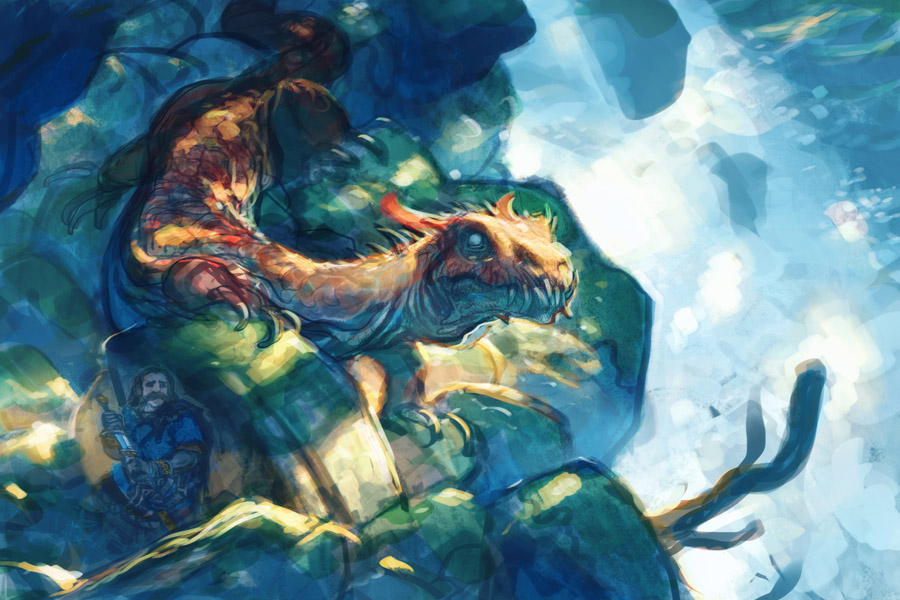

Beautiful works and good insight into this method. Thanks for sharing!
I love this.
What kind of surface are you painting on?
It's canvas that I have primed and sanded.
Thank you!
Thank you, Nicolay!
even the under paintings are beautiful! i love the soft, halo effect that glazing can give vs jumping right into the painting. so inspirational, as usual!! <3
A great post, ThankYou! :}
Can I ask do you keep the glazes from beading up and not looking all scratchy and washy? It's seems as if the consistency of the medium in the glaze has to be enough to not obliterate the underpainting but also not be too much of a liquid to get the beaded scratchy look?
Can I ask how you keep your glazes from beading up or looking like a scratchy,messy wash? It seems like one has to use a medium in the glaze or the paint is too opaque obliterating the underpainting, and when I've tried to thin the paint I never get an even wash without it beading up?